It’s a bit of a left field review for me this one. I’m not really a fan of shooting photos or video with my mobile phone, nor do I shoot video as a hobby but when Smallrig got in touch, I couldn’t resist the opportunity to try their iPhone cage and new Smallrig 1.55x Anamorphic lens.
If you don’t know what these words mean, then let me first explain. A “cage” is essentially an exoskeleton for a camera that allows various other bits of kit to be fitted to it. We use cages at work with our Sony cameras – they allow us to attach handles, small lights, microphones, screens etc without putting strain on the hot shoe. In short, they’re great for helping to turn normal cameras into more advanced video gear.
“Anamorphic” lenses are most commonly used in cinema. Their original purpose was to produce a wider image from a frame of movie film without simply cropping the top and bottom off the frame. They do this by optically squeezing the image horizontally at the point of capture. For playback of the image, the projected picture would then be de-squeezed horizontally. The result was a wider aspect ratio image captured on a normal aspect ratio frame of film. This, of course, has advantages over simply cropping a normal aspect frame in terms of grain/noise and resolution.
There are other impacts of using anamorphic lenses though, which – alongside the wide aspect ratio – have become associated with a more “cinematic” look. Depending on the lens, traits include the vertically stretched bokeh, a bit of barrel distortion and curvature to the subject, softening of the image and blue flare that stretches horizontally out from most light sources. Also, since anamorphic lenses capture a wider frame, a byproduct of using them is that longer lenses can be used to create wider angle shot, and as such shallower depth of field can be achieved with wider framed images without the use of faster lenses. It is these latter factors that are more commonly the justification for using anamorphic lenses in the digital era.
That really is about the most abridged description of anamorphic lenses and their use I can muster. If you’re interested, Wikipedia has a pretty good history on the topic here. The gist – at least as far as this article goes – is that they make wider aspect ratio frames from more normal aspect imaging systems, and are associated with a cinematic look.
SmallRig Gear
So what has all this got to do with iPhones and Smallrig? In short, small rig have developed a cage system for iPhones and an 1.55X anamorphic lens. The idea being that the iPhone can be more readily used as a video camera, and images captured with it can be made to look arguably more cinematic. They aren’t the first to make anamorphic lenses for iPhones, and possibly not cages either, but in my experience Smallrig gear is pretty good value for money, so I was definitely interested to see how good this particular combination of kit would be.
I’ve decided to split this review into bits. The goal originally was to review the cage and lens as one. As I will get to, the 1.55X anamorphic lens can be mounted to the camera without the cage, but actually the cage makes it a lot easier. In using the kit, I’ve also found the cage and grip they sent me with it to be useful outside of its function as a method for holding the lens, so I wanted to talk a bit about that too. As such, I will start with some thoughts about the cage by itself.
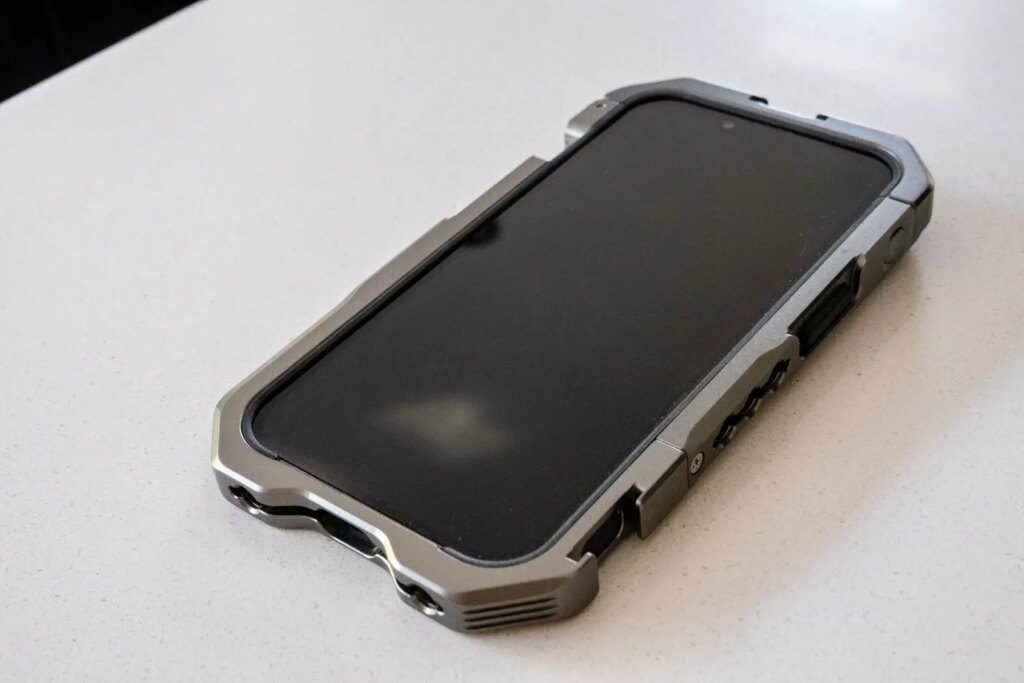
Smallrig iPhone cage
Smallrig make a few different cages for a few different smartphones – you can see the range here. The Smallrig iPhone cage is effective a metal casing that surrounds the edge of the iPhone and about 1/3rd of the back of it. I have an iPhone 13 pro, so already not a small phone and the cage, even by itself makes the phone feel a good bit bigger if you just wanted to use it as a metal protective case. Fortunately, I already have a Mous case for my iPhone – I have had Mous cases since I had an iPhone 7 and have found them to be every bit as good as they claim so have no need for the cage as something to simply protect my phone. Of course, using the cage does require the removal of any other phone case which is a little bit of a faff, but considering how I have used the cage hasn’t really been a big deal for me.
To house the iPhone in the case, there is a button release which pops open the top edge. With the cage open, the iPhone slots into a rubber shroud that’s within the cage and protects the phone. The fit of the phone inside the cage is near perfect – there’s little to no wriggle room. I was slightly concerned by the button release to begin with. I had visions of it popping open and the phone falling out, but having used it a fair bit, it seems to have proved safe.
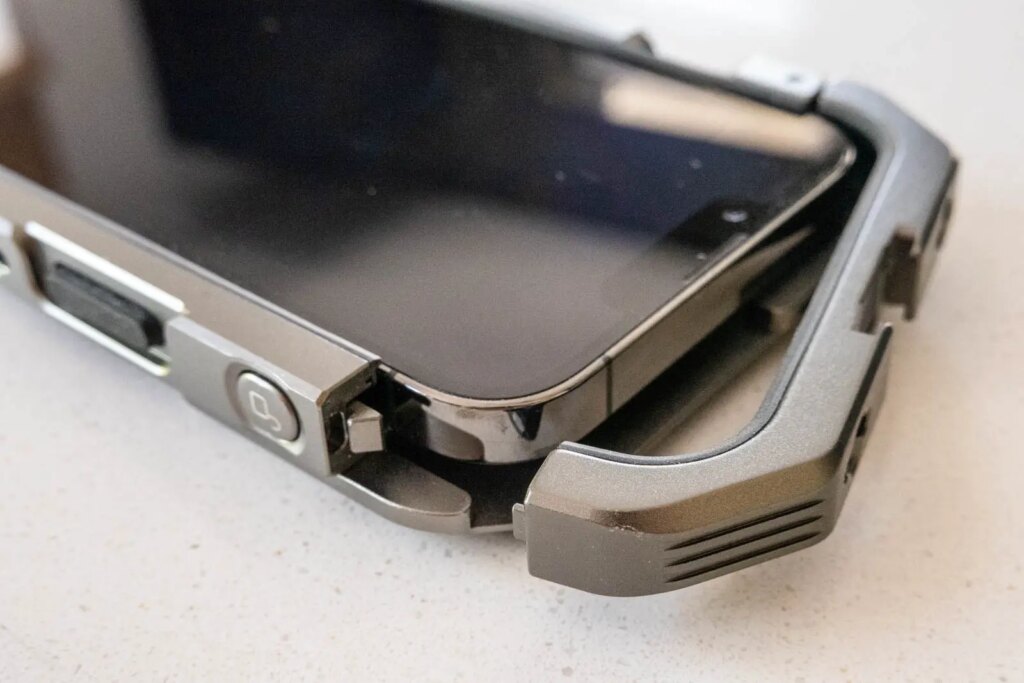
Once mounted, the cage itself has a whole series of mounting points. Smallrig’s various accessories use a combination of 1/4” threads and shoe mounts. The cage has two single threads on the top and bottom of the phone and one set of three threads on each side. There are also two cold shoe mounts which the Smallrig system seems to make use of for mounting lights, but could also be used for mounting anything a shoe attachment could be fitted to.
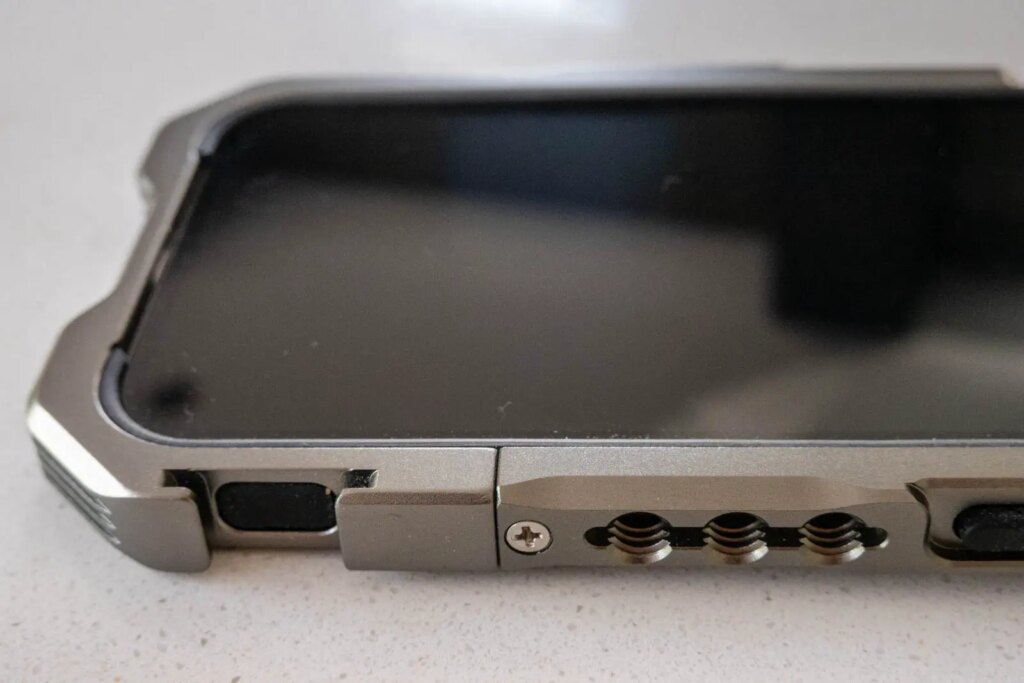
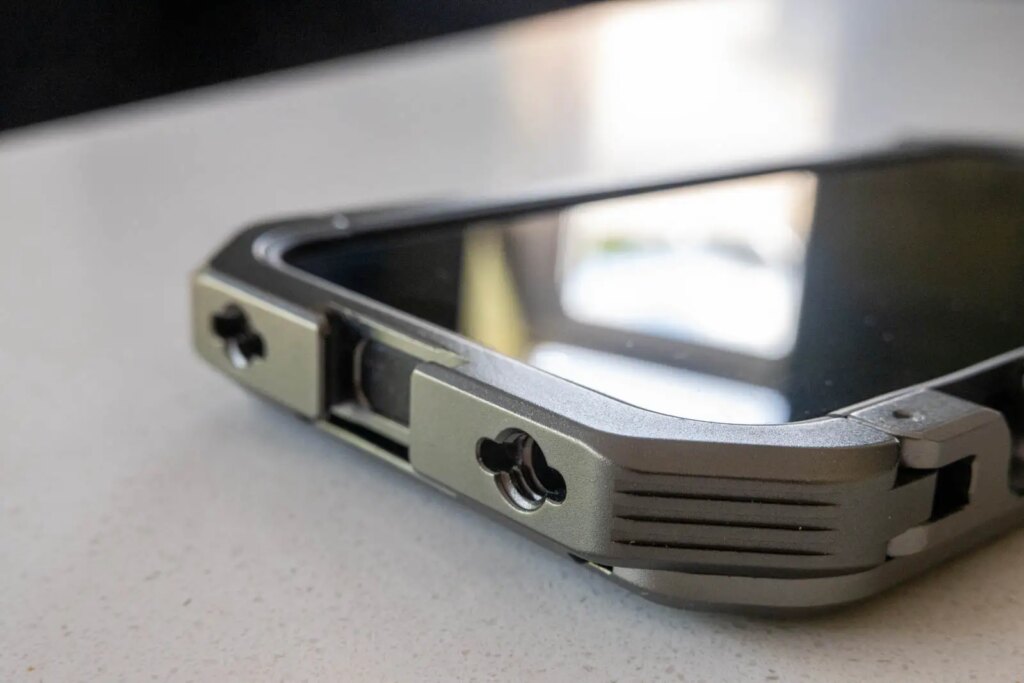
Finally, and possibly most pertinent to this review, the back of the case has a plate that surrounds the various camera lenses. Around the telephoto and wide lens there’s what seems to be called an “m-mount” for accessory lenses such as the anamorphic lens that I’ll come to in a mo.
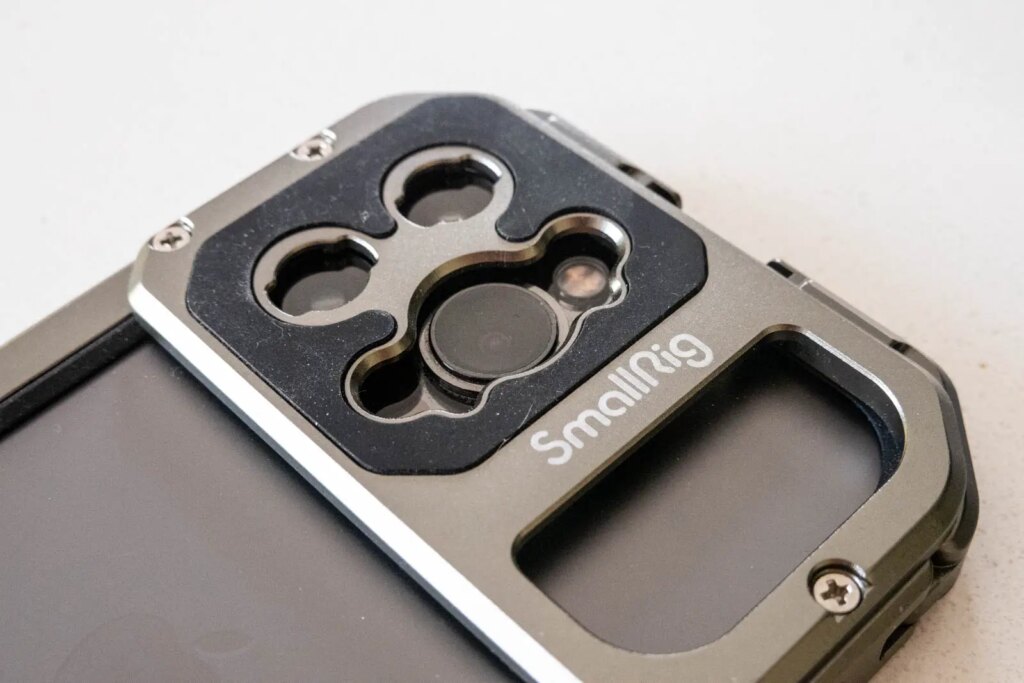
Accessory Grip
Smallrig also sent ma an accessory grip. The purpose of a grip like this is probably obvious. If you’re going to be attaching all sorts of additional bits such as lights and mics to a smartphone, being able to hold the thing comfortably is definitely going to be an advantage. The grip screws in very securely to any of the single mount points on the top or bottom of the phone. It also provides additional 1/4”’threads for further accessory mounting as well as places to attach a strap.
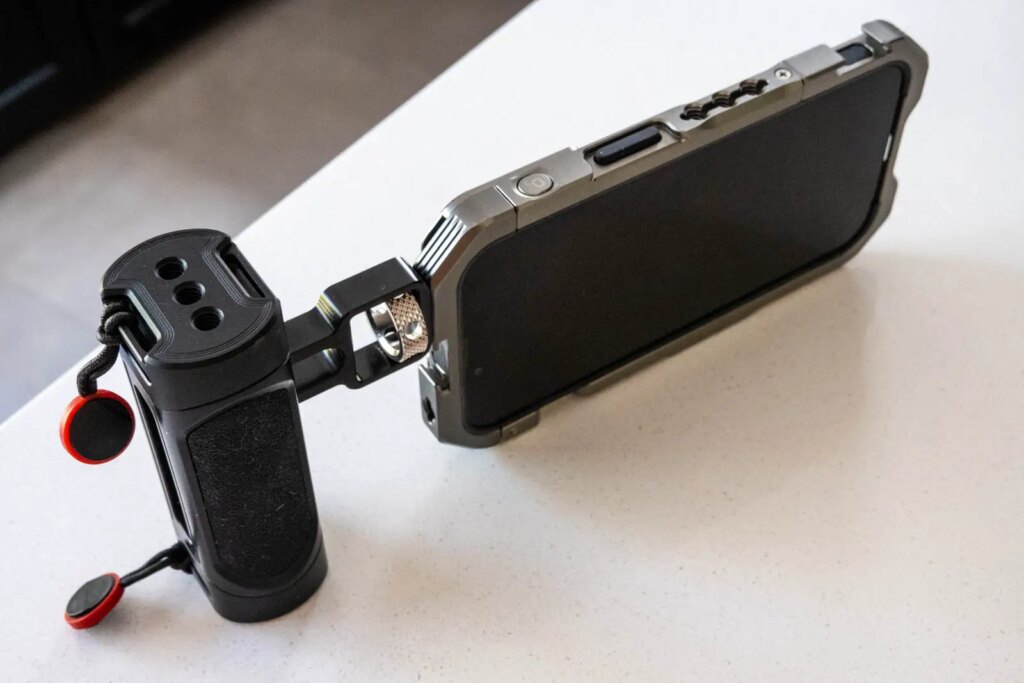
In use
In use, there is no getting away from the fact that the Smallrig cage and grip definitely makes the iPhone a fair bit larger than an iPhone by itself. Of course, that’s pretty much the point. By making it bigger, especially with the add on grip, it becomes a lot easier to hold.
I initially mounted the grip to the bottom of the cage/phone so I could hold it in my right hand like a “normal” camera. I soon found this to be a little less practical than mounting the grip to the top of the cage/phone. With the grip being in my left hand, I found my right hand freed up to use the various controls that are on the right hand side of the screen. This also allowed me to attach a strap to the top of the phone which made carrying the whole thing more comfortable.
It was also nice being able to carry my phone when paddle boarding with my family. Since the phone is IP68 rated, I wasn’t worried about falling in the water with it. Having it strapped to me rather than being in a pocket gave me the confidence that I wasn’t going to lose it too. Though, I have to say, it did fell like a big bit of kit strapped to me, so I’m not sure I would recommend the cage and grip by themselves as just a method of carrying the camera securely, it just happened to work for me in lieu of an alternative.
The Smallrig 1.55x Anamorphic Lens
Before I get to the actual 1.55X anamorphic lens itself, I’ll just cover some of the practical considerations of using a lens like this. Anamorphic lenses tend to come in two varieties, 1.33x and 1.55x. In simple terms, this is the amount of squeeze they apply to the image. So, if you mount a 1.55x anamorphic lens to a camera, it will squeeze the image to the degree that to de-squeeze it, you need to widen it by 1.55x. 1.55x lenses are therefore more powerful in terms of the amount of squeeze they apply and therefore the end result is a wider aspect ratio image. As I’ve said, in the early days of Anamorphic cinema, the de-squeeze was done optically, now with digital capture, we do it digitally.
I’m not going to deep dive into this too much, as I’ll end up elbows deep in long lists of pros and cons, but it’s also worth noting there are two options for when the de-squeezing of digital content takes place. It can either be de-squeezed at the point of capture, or de-squeezed in post process. Further to that, there’s also considerations around the preview image. So, for example, if you were to mount an anamorphic lens onto a iPhone and just use the standard camera, the live preview of the image will appear squeezed. This can make composition a little confusing. To remedy this, some sort of app that provides a preview of the image de-squeezed is definitely worth investing in. Your mileage may vary, but after a little bit of digging online and then asking the question on Twitter, I found the Filmic app package would do all I needed it to. For my workflows I used Filmic pro for video and their Firstlight app for stills.
I set Filmic pro to both show a preview of the video de-squeezed and to capture and save the video in its de-squeezed wide format so I wouldn’t have to de-squeeze it in post. As I’ve said, there are pros and cons to this, but to keep this review relatively concise, I’ll let you do your own reading. In short, I was more interested in a faster post process workflow, and less interested in ultimate quality.
For stills using Firstlight, unfortunately it only offers and 1.33x de-squeeze. As a result of this, I opted to save to RAW and then de-squeeze in Photoshop later. I then set the app to preview using the 1.33x de-squeeze to help with framing. The image still looked a little squashed, but it definitely helped. A little tip: de-squeeze in Photoshop is really easy. Just edit the image size, untick the constrain proportions option and multiply the horizontal resolution by the value of the lens. So, for a 1.55x lens, if your horizontal resolution is 1000px, you just edit that to 1550px and that will de-squeeze your photo.
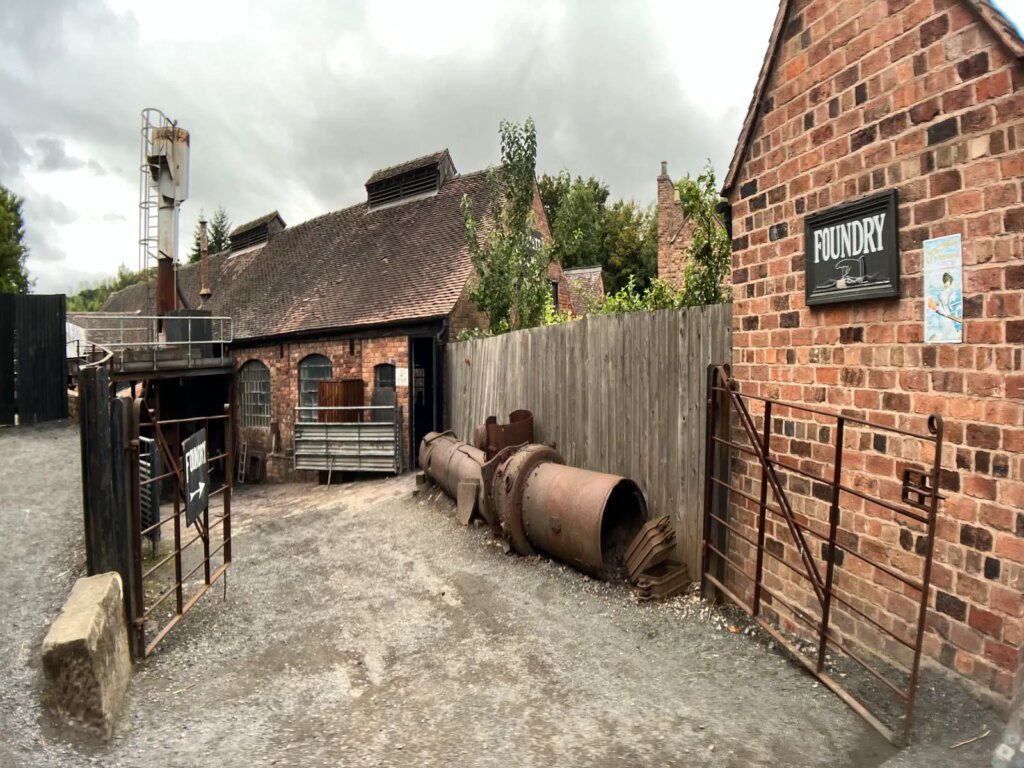
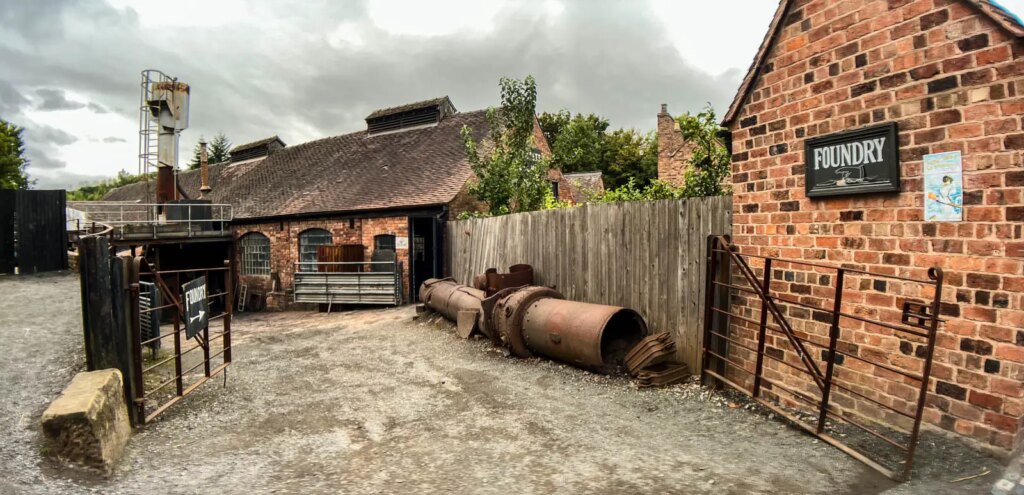
The Lens
The Smallrig 1.55x anamorphic lens comes in a neat little carry case with all you need to get going even without the cage. It can be attached to the smartphone with a supplied sprung clip, and there’s even a filter mount. Unfortunately, I found it nigh on impossible to get the lens lined up properly with the clip alone. I’m sure it can be done, but I ran out of patience knowing I had the cage to resort to.
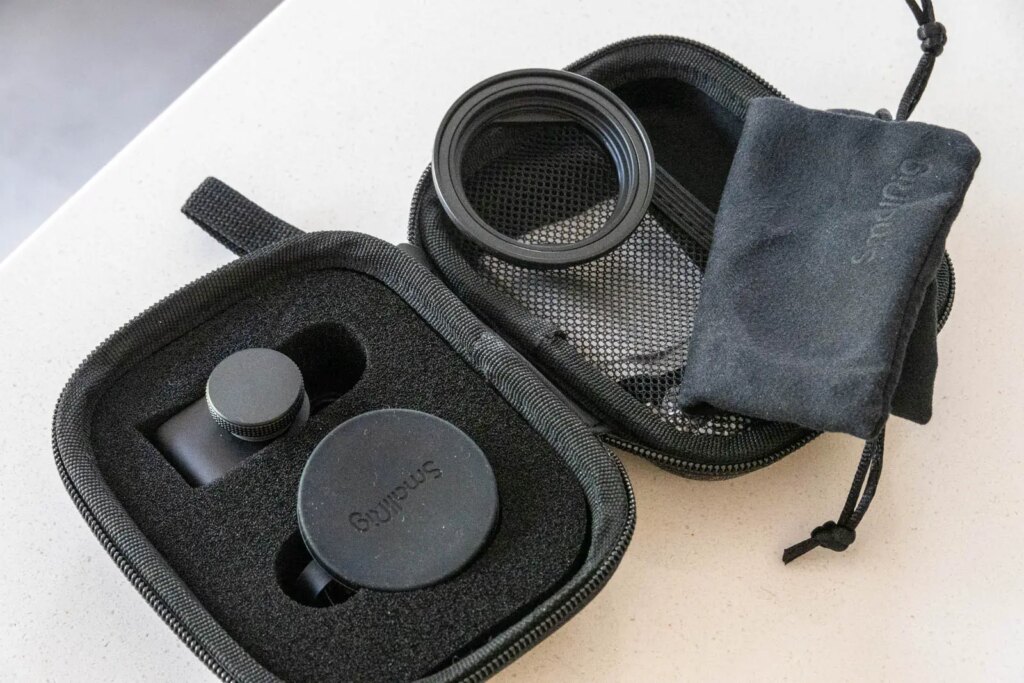
With the cage, mounting is a lot easier since the back panel that surrounds the lenses has mounting points that are perfectly aligned to the wide and telephoto lenses. There’s no mounting point for the ultra-wide lens. The lens mount itself is a very simple bayonet style mount – apparently called m-mount… There’s no lock mechanism, the lens just inserts and rotates, tightening as it does so. Apparently the mount on the cage will also take threaded mounts too.
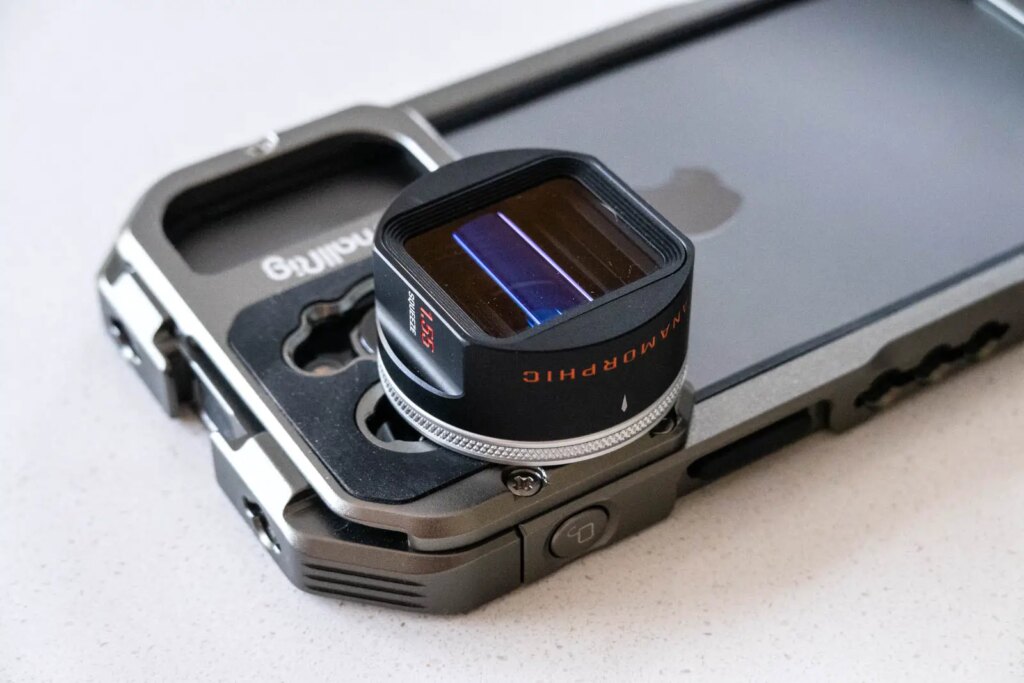
The Smallrig 1.55x anamorphic lens actually comes in two parts. The mount part and the lens part. The two sections are held together with 4 strong magnets. I suspect this means that other types of lenses could be quickly attached and detached from the mount part once it’s in place. I must admit, I did initially worry that this would make for easy losing of the lens, but I’ve carried it around attached without any real issue. It’s certainly never fallen off.
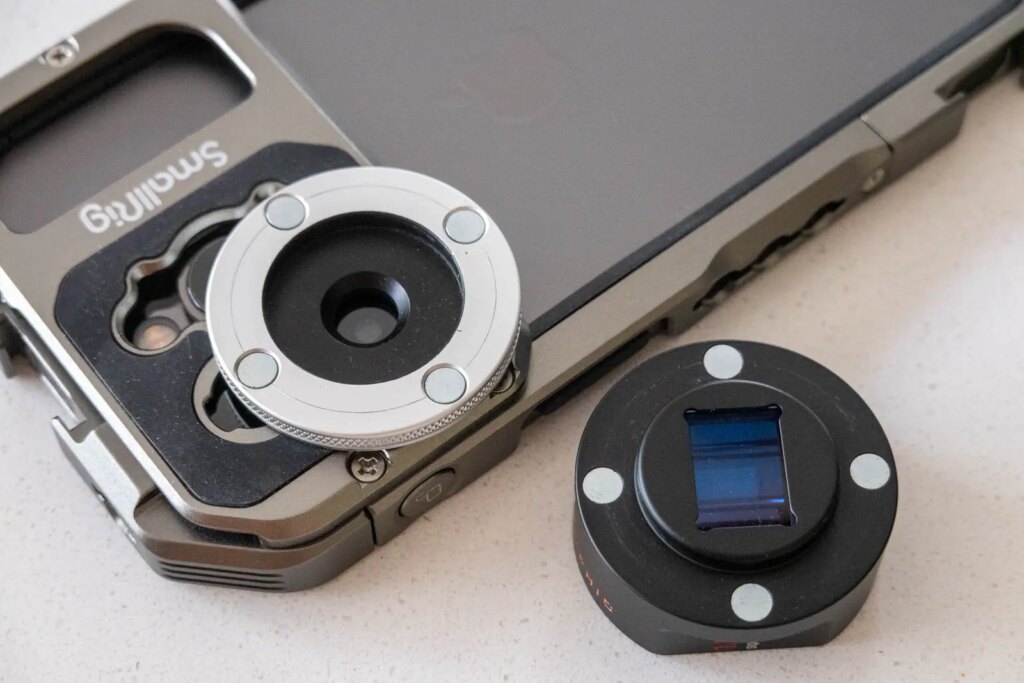
The Anamorphic Look
I suppose it’s just the big question that remains then: how well does the little SmallRig 1.55X anamorphic lens work to create an anamorphic look to your video and stills from an iPhone? I should caveat my answer by saying I’m no Steven Soderbergh. That is to say, my experiences are based on taking a few snaps and short bits of video to test the lens in a way most people might use it, i.e. I didn’t shoot an entire cinema release on my iPhone. With that said, I did find myself impressed with the look the lens creates. Depending on the lens you mount it to, it does indeed bring a version of most of the expected character traits to the table, with the exception of bokeh. But then, if you’re expecting bokeh in any meaningful way from an iPhone, you’re probably barking up the wrong tree anyway. Aside from that, the impact of the anamorphic adapter depends on the iPhone lens you attach it to, and the difference between the two is quite dramatic.
On the tele lens
The iPhone 13 telephoto lens has an equivalent focal length of 77mm. Mounted to this lens, the 1.55X anamorphic lens gives a field of view that feels something around the equivalent of the longer end of a normal focal length once de-squeezed. Possibly the most apparent characteristic it adds on the longer lens is the softening of the image. There’s also more aberrations with little bit of fringing and flare, though there isn’t much to note in the way of distortion. The anamorphic flare is very apparent too. Whilst shooting with it inside an amusement park I got some bits of flare that even a certain Star Trek director would (not) be pleased with!
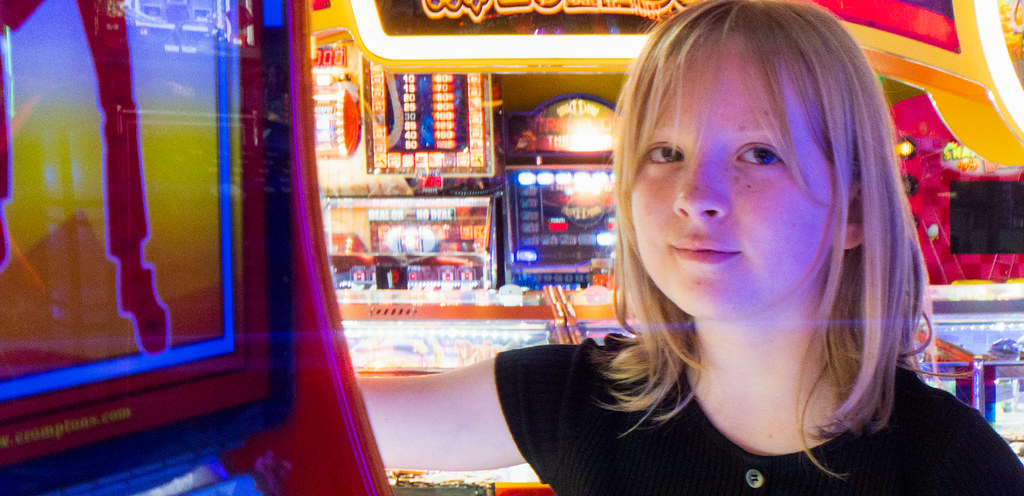
With the SmallRig 1.55X anamorphic lens mounted to the wide angle lens on my iPhone 13 which has a 26mm equivalent lens, the experience was quite different. To begin with, the softness was a lot less apparent. It’s still there, but doesn’t feel like it dominates the image in the same way. Conversely, the barrel distortion a significantly more apparent! You can see this in most of the images and some of the frames of video. The frame also curves a lot with the wide angle lens. I don’t know the proper word for this, if there is one, but what I’m describing here is the look that you also get when you make a stitched pano or shoot with a camera with a rotating lens and the frame distorts. Other aberrations are also visible, as is, of course, the anamorphic flare which in the right circumstances shoots blue lines across the frame.
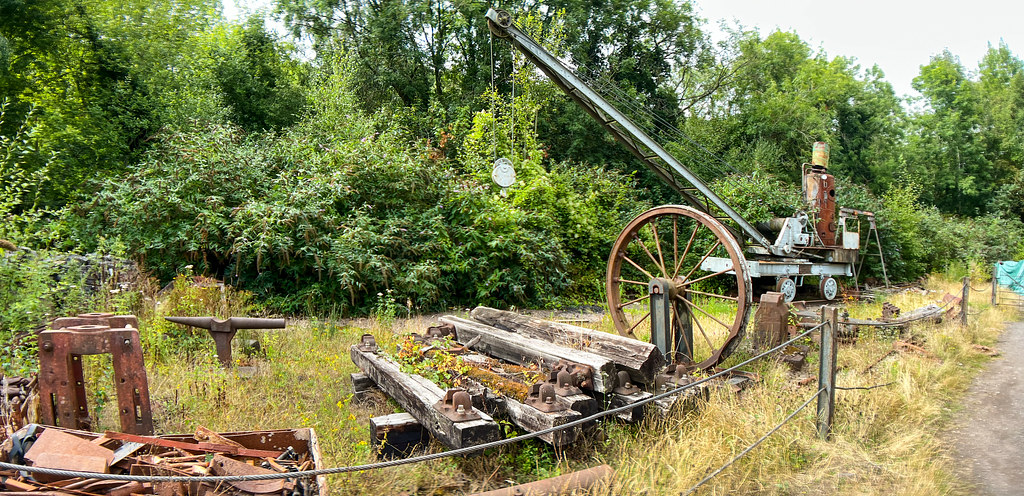
Subjective Opinions on the Lens
I shot both still and video with the lens on both wide and tele lenses. Interestingly, I came away with opposite opinions on which I liked for which medium. For stills, I much prefer the wide angle lens shots. The distortion brings an interesting element to the image which is usually only obtainable with stitched/sweep panos or a rotating lens.
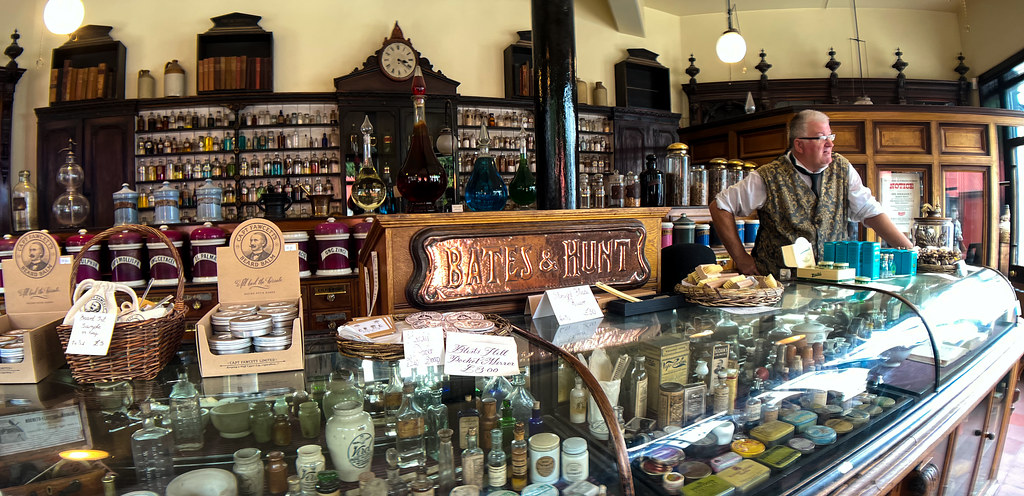
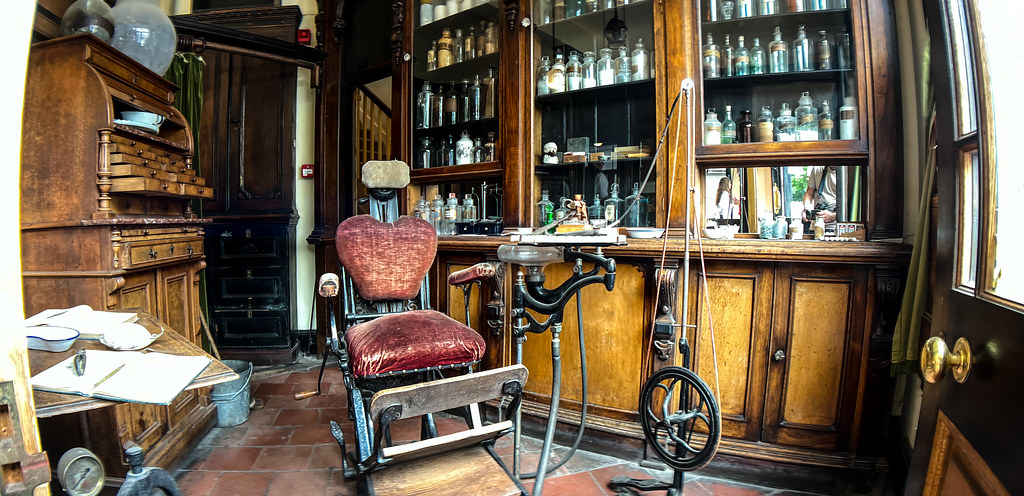
For me, the softness the SmallRig 1.55X anamorphic lens lens brings when mounted to the tele lens is just too much. Apart from a couple of shots, I felt it subtracted from the image rather than adding something.
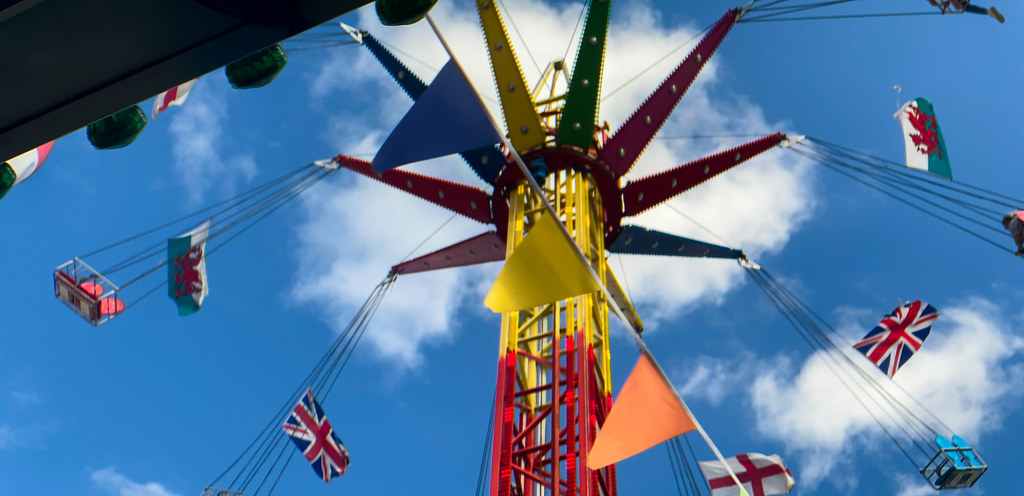

For video, my opinions are flipped. The SmallRig 1.55X anamorphic lens mounted to the wide angle lens is just too extreme and I find the impact of the distortion and curvature of the frame often too much. That’s not to say that I don’t think I could harness it – I do quite like a dramatic wide angle anamorphic tilt shot for eg. But apart from that, I found myself much more able to get pleasing shots for video with the anamorphic lens attached telephoto lens on the iPhone. Of course, the lack of sharpness is still a factor, but unlike with still shots where I found it too imposing, in the video shots I found the characteristic softness added something. The softness does indeed add something of a cinematic feel, or at very least something of an archetypal moving picture feel that made the shots a lot less apparently shot on a smart phone to me.
Video Sample Shots
You can see a small selection of the video I shot in this little video. As I have said, the video was shot with Flimic Pro. It was shot at 50fps with the Cinematic stabilisation applied which it is worth noting does crop the frame and therefore possibly increase the perceptible softness slightly.
Final thoughts
Overall, I’ve found myself impressed with this kit. The Smallrig grip and cage seem to me to be very good quality. I really have very little to say that’s negative about them. If I was looking to mount additional accessories such as mics, lights, and of course, add on lenses to an iPhone, I would definitely be very pleased with this kit.
The SmallRig 1.55X anamorphic isn’t as simple in terms of a recommendation. The quality of image it provides isn’t perfect, especially when used on the tele lens on an iPhone for still where the softness can be really quite apparent and not always pleasing. But actually, that’s sort of the point of an anamorphic lens. It’s in their nature to introduce aberrations, many of which are heavily associated with a cinematic look that – especially in recent years – a good few directors have leaned into.
Of course, it’s fair to say that attaching the SmallRig 1.55X anamorphic to your iPhone isn’t going to make your iPhone video look perfectly like it was shot for cinema, certainly without any fancy post process grading etc. But, I would argue that in the right hands there’s enough of the pieces of the puzzle here to aid in creating a look that I definitely wouldn’t associate with iPhone-shot video, even without grading. And, for the money this kit costs, there’s certainly enough fun to be had even without serious intentions to take on Mr. Soderbergh. I certainly haven’t finished my experimentation!
You can find more info about the SmallRig 1.55X anamorphic lens on their website here, and more info about their grips here
Smallrig also supplied these dealer links:
Share this post:
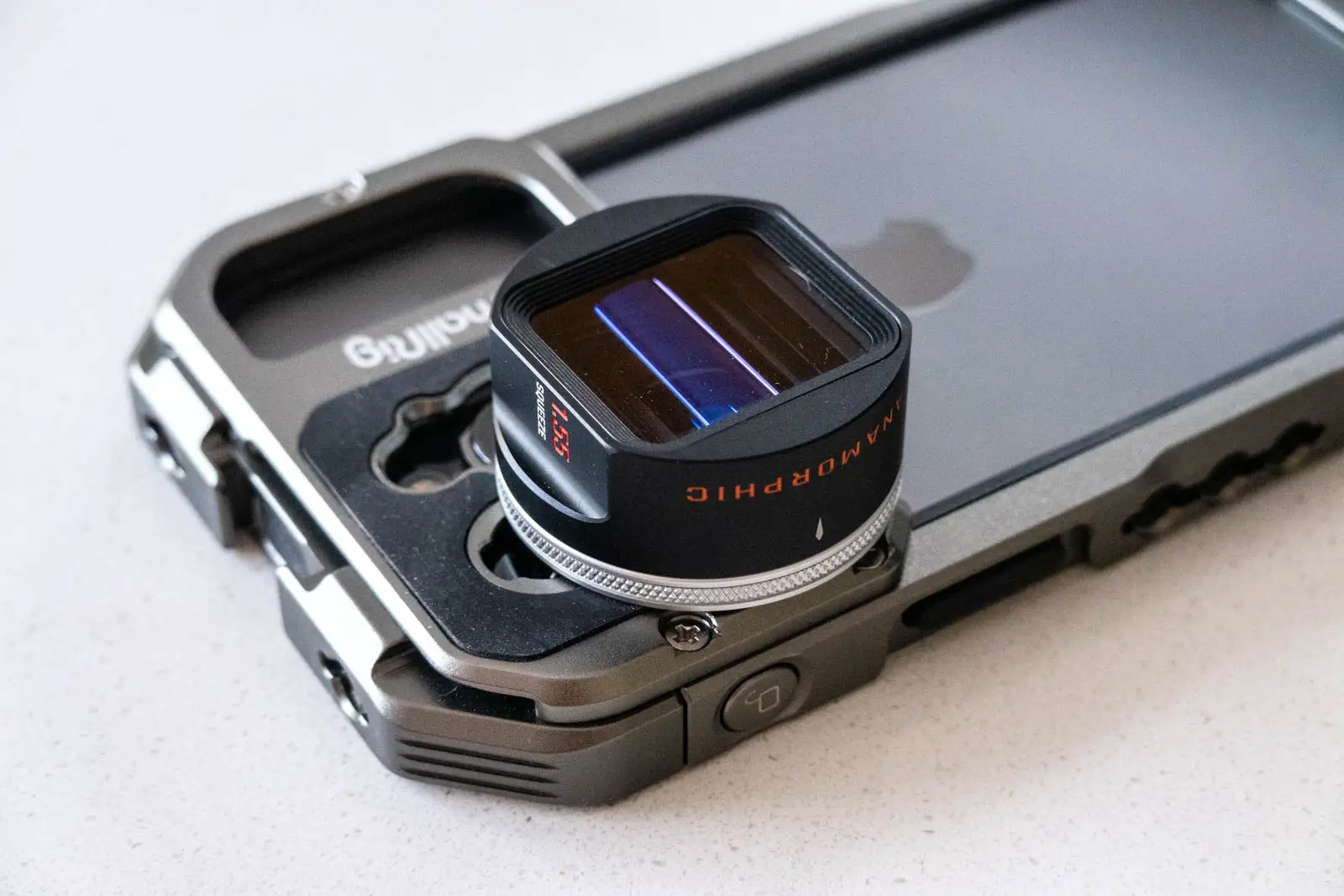
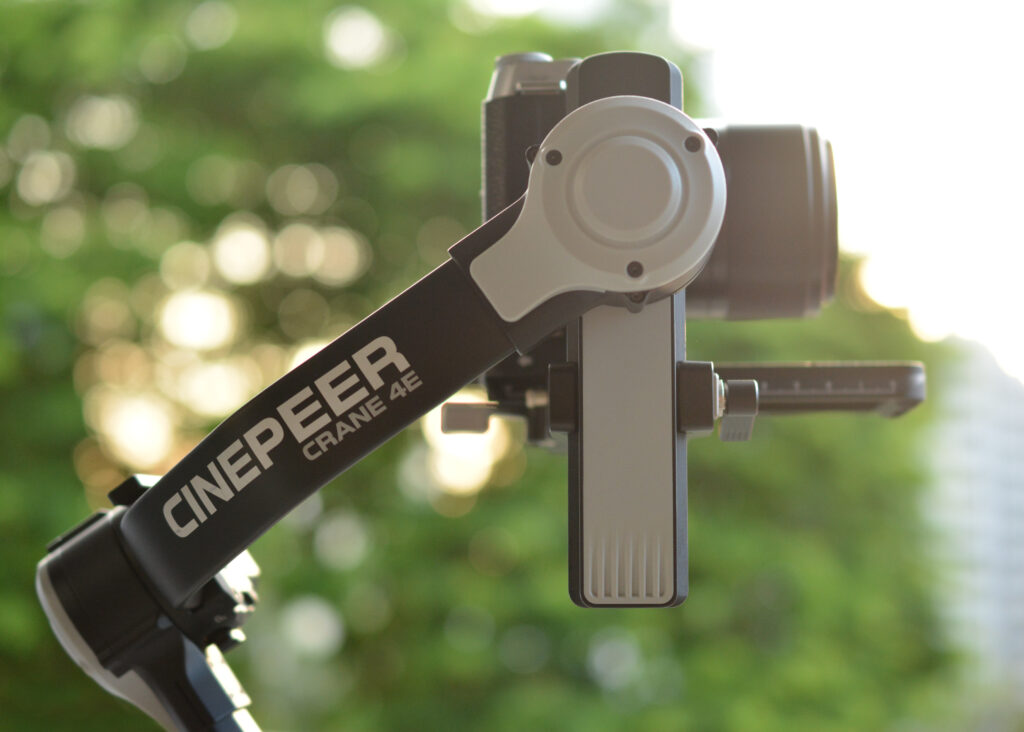
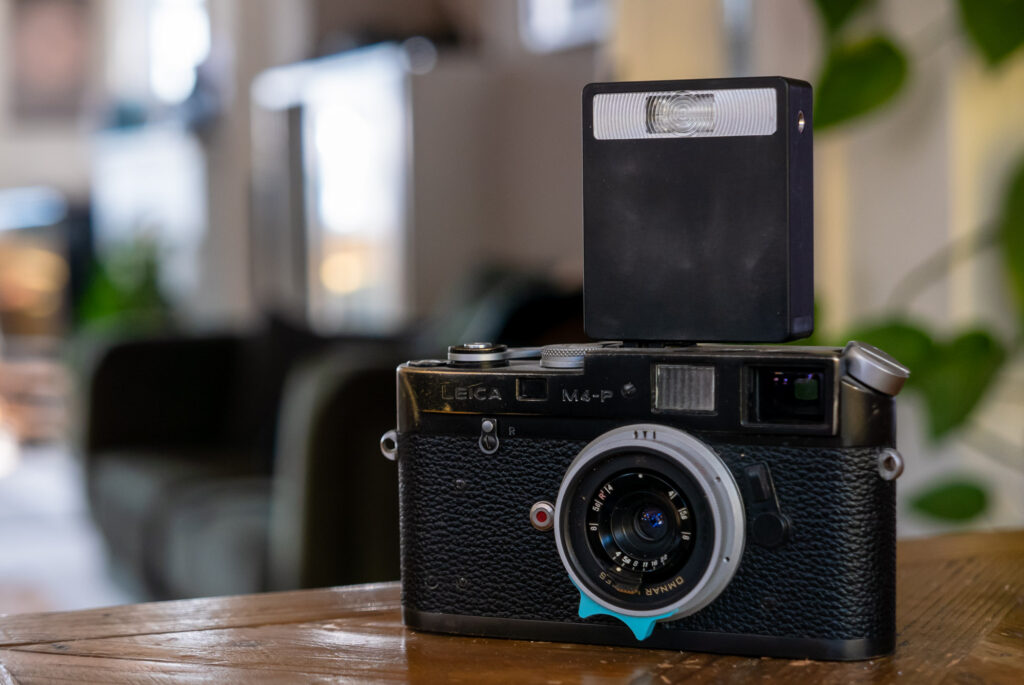
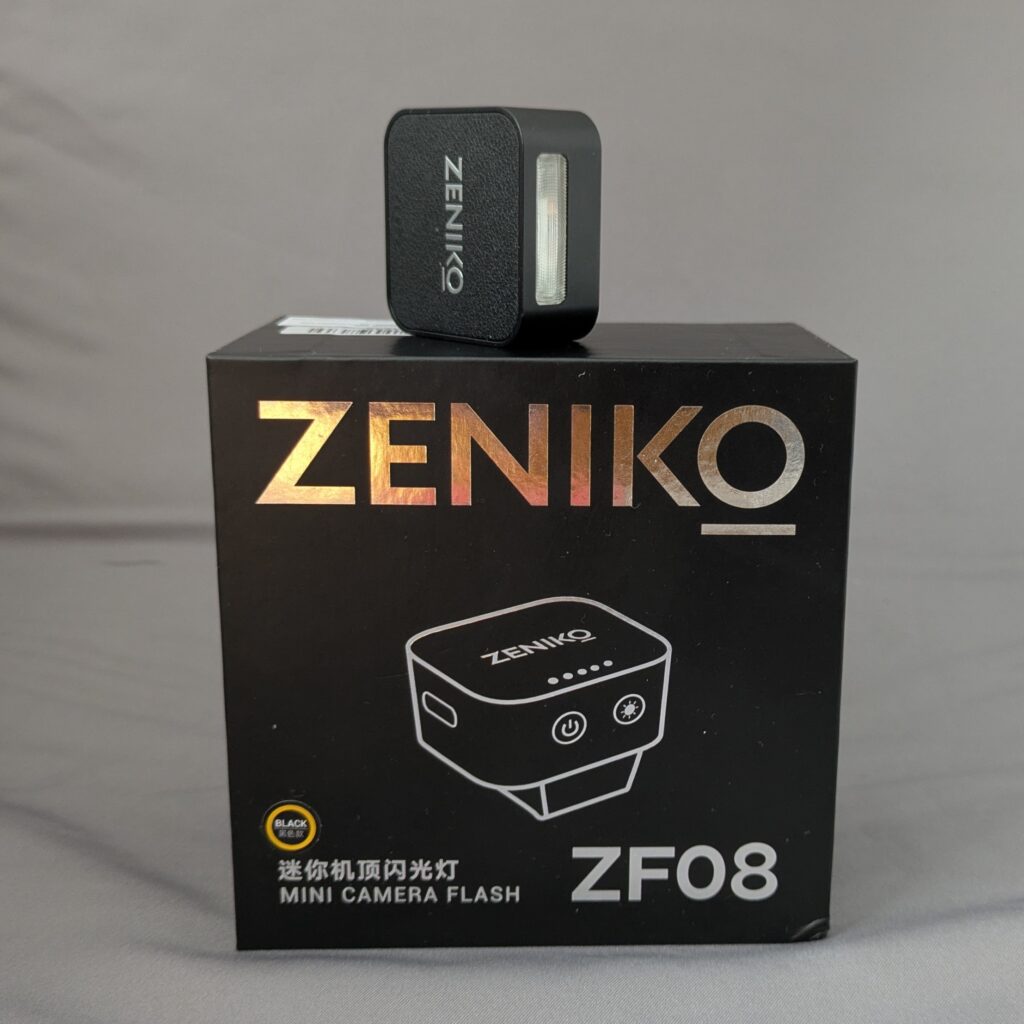




Comments
JK LOCKWOOD on SmallRig 1.55X Anamorphic Lens, iPhone Cage and Grip Review
Comment posted: 05/09/2022
Comment posted: 05/09/2022
Steven G on SmallRig 1.55X Anamorphic Lens, iPhone Cage and Grip Review
Comment posted: 05/09/2022
Comment posted: 05/09/2022
Matthew Bigwood on SmallRig 1.55X Anamorphic Lens, iPhone Cage and Grip Review
Comment posted: 07/09/2022